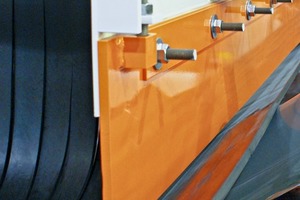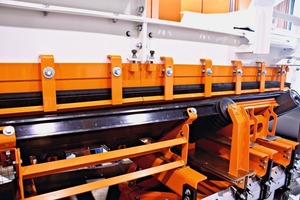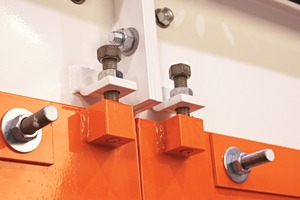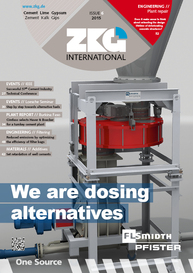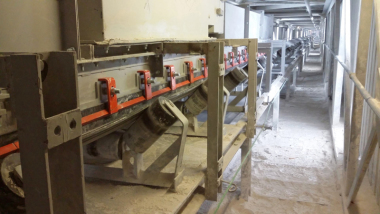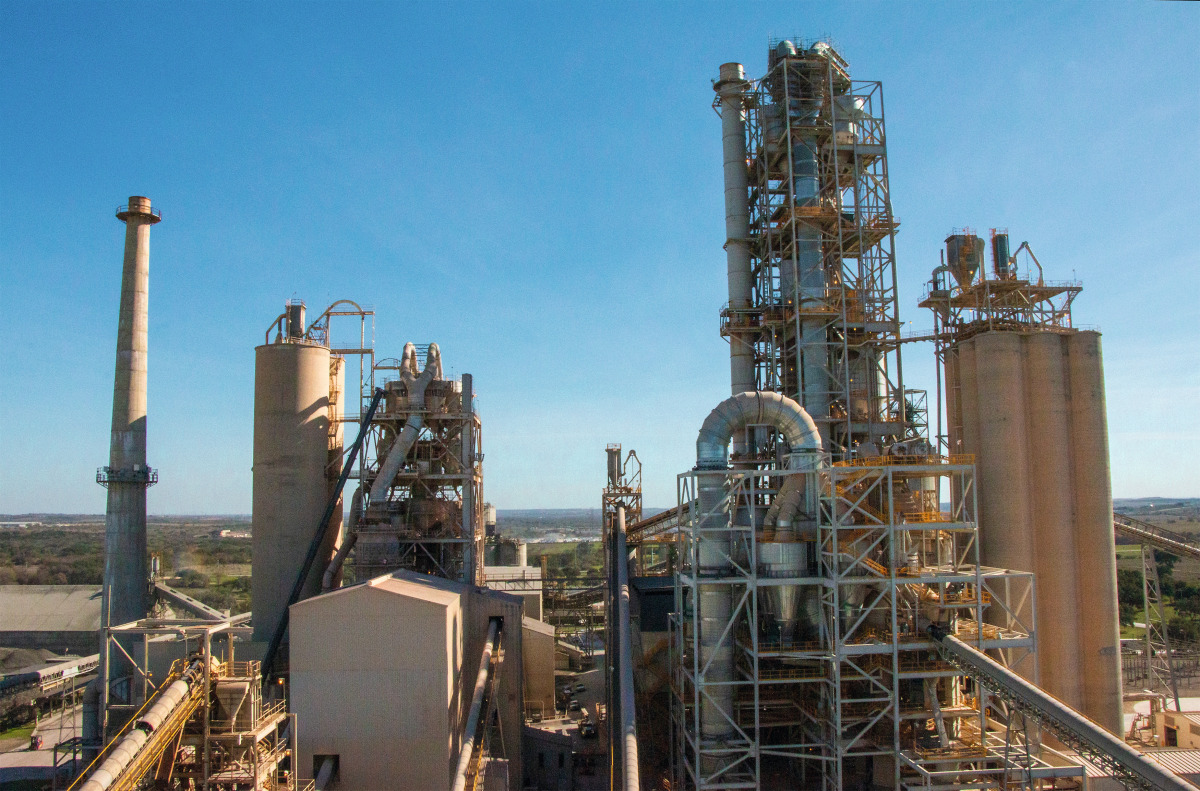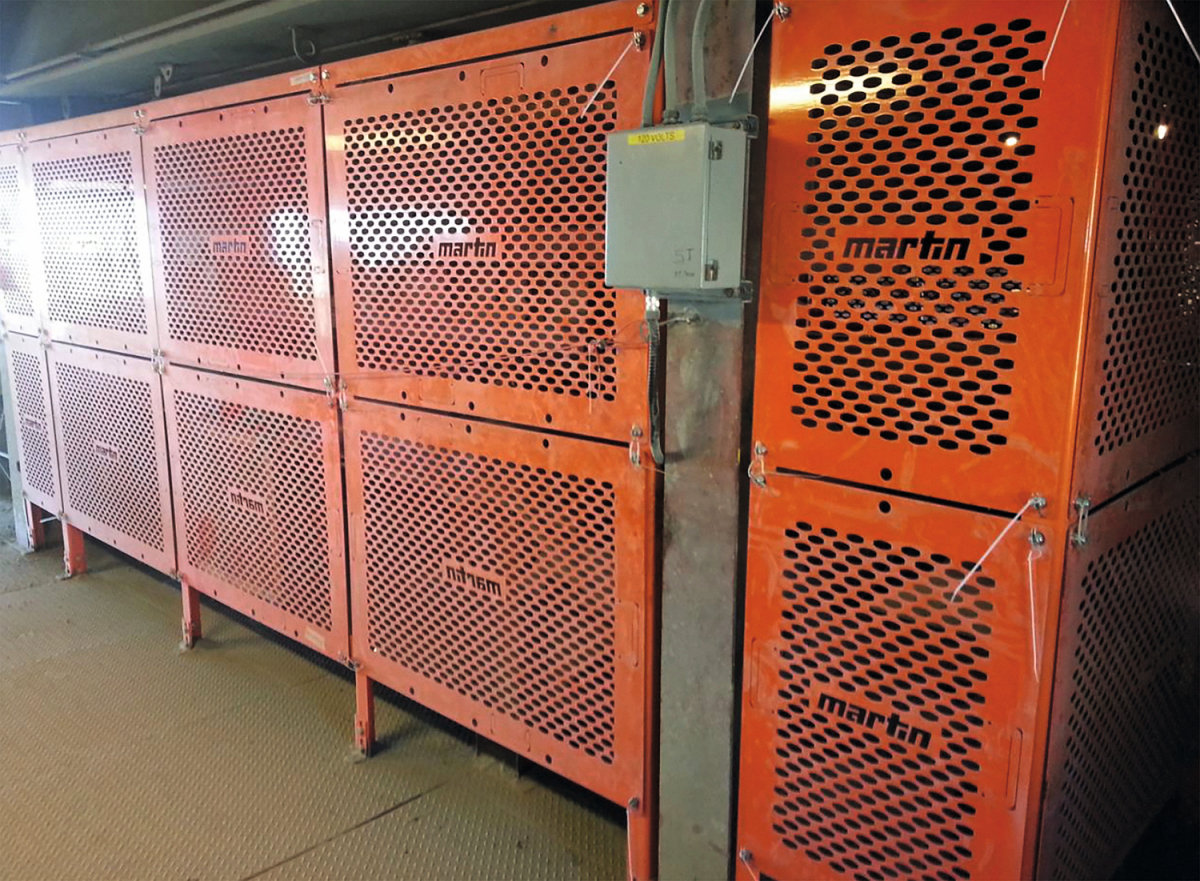External wear liner delivers safer installation and maintenance
Martin Engineering from Neponset, IL/USA has redesigned an integral conveyor transfer point component to eliminate worker entry into the chute box for safer replacement, easier maintenance and reduced downtime. Conventional wear liners have historically been installed inside the chute, but the EVO® External Wear Liner from Martin Engineering is placed on the outside, improving skirtboard sealing and preventing spillage. The result is excellent performance with fewer labor hours and a lower cost of ownership.
“The wear liner is essentially considered a sacrificial layer,” explained Daniel Marshall, Product Engineer at Martin Engineering. “Removal and replacement used to be a grueling job that could require multiple workers and days of scheduled downtime. Our goals with this design were to significantly cut the installation and service time, while reducing risk and improving safety.”
Previous designs securely welded the wear liner to the inside of the chute, with only the skirt seal located on the outside. The logic behind the conventional design is for the wear liner to protect the skirtboard, which is typically 2.54 cm sheet metal and not strong enough to withstand the sustained force and abrasion from bulk material.
Instead, Martin Engineering designers came up with the idea of raising the chute work about 10.16 cm above the belt, out of the way of the material, then putting the wear liner on the outside. Using this approach, the material still hits the liner and doesn’t damage the chute. “It was a real light bulb moment,” Marshall said. “We were surprised that no one had tried it before, as it has some obvious benefits.”
After elevating the chute box above the material flow, a 0.95 cm or 1.27 cm thick abrasion-resistant liner plate (AR 400 or 500) is mounted on the outside of the chute, followed by the skirt seal. Mounting brackets with jackscrews provide a tight hold, with precision adjustment of the wear liner to reduce spillage. This system closes the gap between the liner and the sealer, thus eliminating abrasion from trapped material without interfering with existing supports. When accompanied by Martin® Double Sided ApronSeal™ skirting and clamps, the system forms a tight belt seal, delivering outstanding fugitive material control.
When a conventional wear liner loses its edge, the replacement procedure is what operators consistently describe as an undesirable maintenance assignment. Moreover, the Occupational Safety & Health Administration (OSHA) considers most transfer chutes to be “permit-requiring confined spaces,” mandating that an “authorized entrant” perform the work inside the chute. An attendant must also stand outside monitoring the safety of the person inside, while assisting in the removal of material from the chute. In some cases, a supervisor further oversees this procedure.
The authorized entrant would go into the chute with a grinder to remove the welds and take off the sacrificial liner, which may have required a torch to cut away the existing material. This can be extremely dangerous, for two reasons. First, the liner can weigh several hundred pounds, and when a worker cuts it loose, it can fall and endanger the personnel inside the confined space of the chute. Second, nearly any dust can be explosive under the right conditions, and having to grind or torch-cut the old liner introduces a spark or open flame.
Some companies thoroughly wash out the chute prior to entry to avoid any chance of combustible particulates, making the job even more time-consuming. Once the old liner had been removed, the new wear liner was positioned to keep it as close to the belt as possible and welded into place.
An external liner can be installed and adjusted faster and easier, without the need for a grinder or torch, through the use of special mounting tabs. Clips for bolting the liner are initially welded in place, but do not require removal when the liner wears out. Since the work is done from the outside, without any grinding sparks or torch flame, the hazard of explosive dust from tool usage is greatly reduced. Replacement liners come in a standard length of 1829 mm, and Martin Engineering uses laser cutting technology to create the complex geometries necessary for a custom fit.
“After decades of using the traditional system, the old procedure just became accepted as the cost of doing business, but we felt there had to be a better way,” Marshall pointed out. “External placement has eliminated many of the safety and maintenance issues surrounding previous designs.”
The new liner is easily retrofitted onto existing equipment using the EVO® External Wear Liner Retrofit Kit. Installers simply cut back the chute wall on existing chute boxes to accommodate the external wear liner. On new installations, the chute is easily engineered to work with the new liner design, as well as other Martin Engineering components such as dust curtains, track-mounted idlers and cradles.
//www.martin-eng.com" target="_blank" >www.martin-eng.com:www.martin-eng.com

